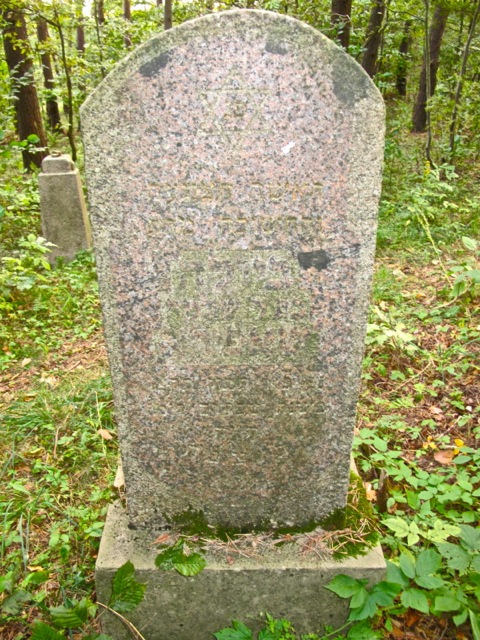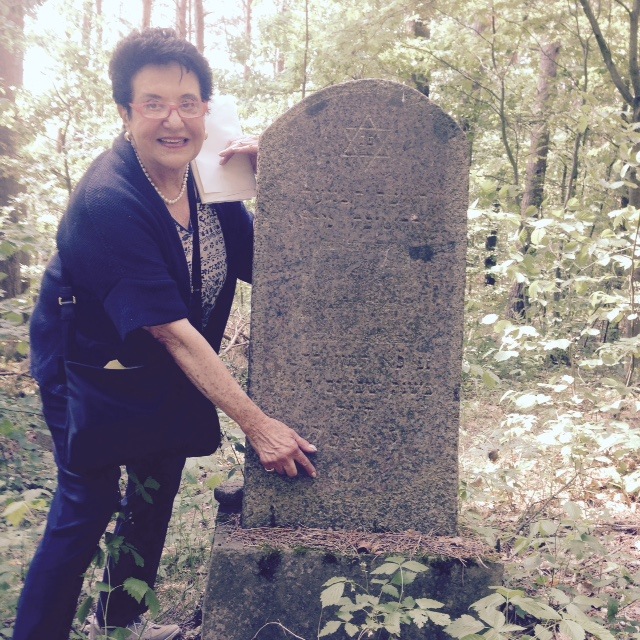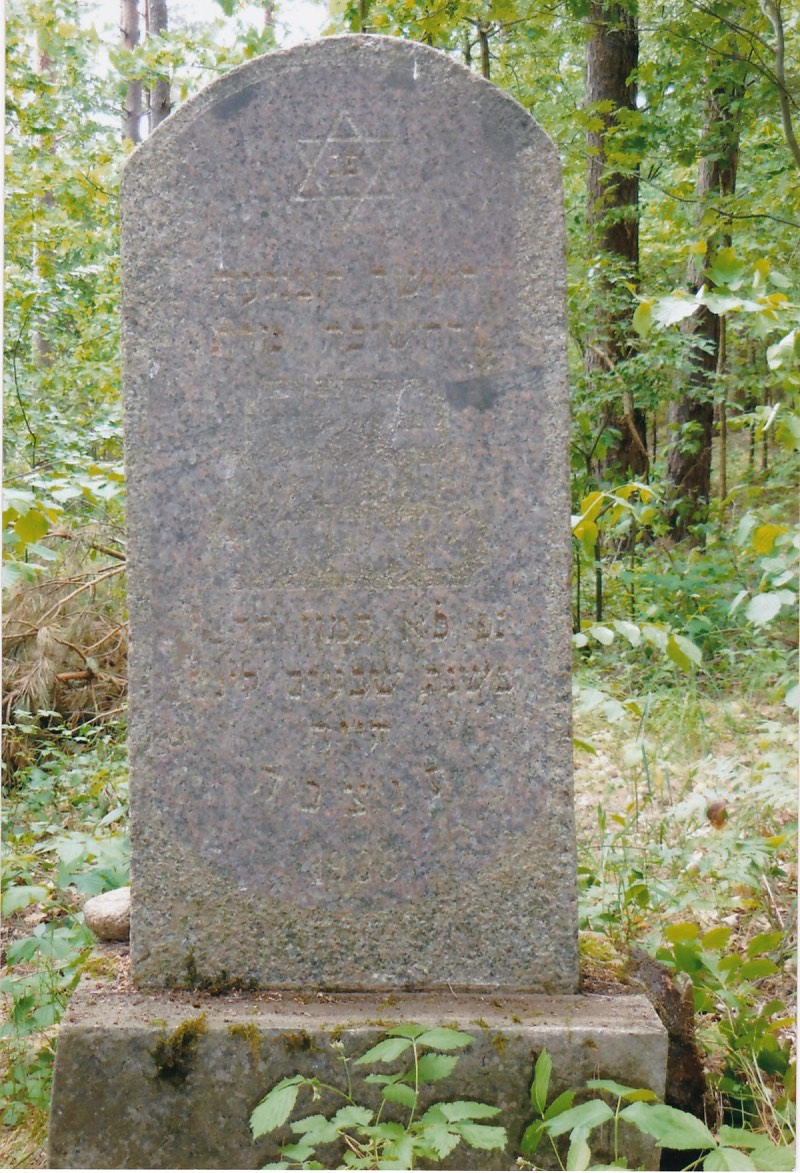Excerpted from Our Family History,
compiled by Barry Traub
(with addenda below)
(With permission of Barry Traub)
INTRODUCTION
During the summer of 2004, I visited Narewka, Poland, with two of my daughters, Nancy and Janet. Prior to the trip, I had arranged (via e-mail) to be guided through the surrounding area by Thomas Wisniewski, who lives in Bialystok and has extensively studied Polish Jewish history, including the restoration of Jewish cemeteries.

MY TRIP TO NAREWKAMy maternal grandmother, Fanny Shapiro [1885-1970], left Narewka when she was 17 years old. She took a horse and carriage to the town of Bialystok, a local train to Warsaw, and a larger train to Antwerp, where she embarked for the United States. After a short stay in New York City, she lived in Hoboken, New Jersey, where she met her husband, Samuel Ehrlich, while they were both staying in a rooming house in Hoboken.
Bella Shapiro (c1933)Narewka had been described to me by my grandmother, mother, and Aunt Selma as a poor shtetl. My mother, Alice, was 15 and her sister, Selma, was 9 when they visited Narewka. When I arrived with Nancy and Janet in 2004, it seemed a non-descript, very small town.
My grandmother's mother, Bella, was listed as being buried in the Jewish Cemetery outside of town. We searched in the cemetery but were unable to find her headstone.*
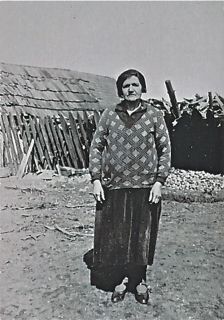
Photo courtesy of Barbara Kotin
Relationship: Grandmother
FAMILY HISTORIES: SHAPIROWe saw a site on the river where my great-grandparents' home and granary stood, although their buildings had been replaced.
There were no longer any Jews living in Narewka ...
Moshe [died 1932] and Bella Shapiro [died 1936], my great-grandparents on my mother's side, lived in the town of Narewka, on the Russian-Polish border. They met through a matchmaker and had nine children, eight of whom eventually emigrated to the United States.
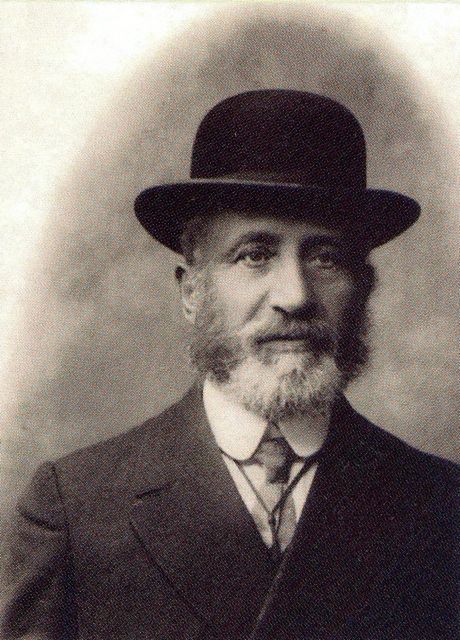 |
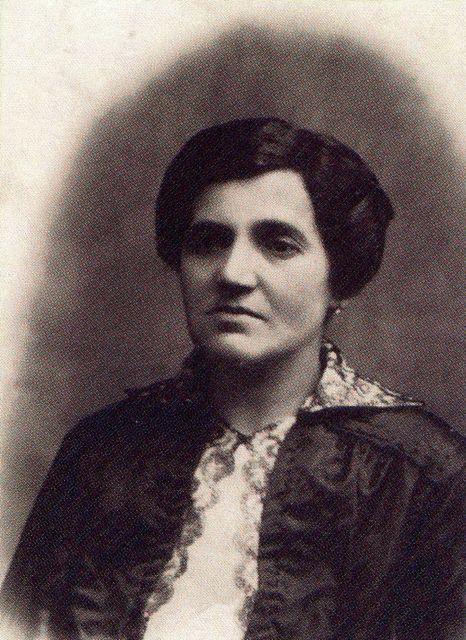 |
Moshe had a grain store. He bought grain from the gentile farmers, packaged it, and sold it. At the time, the town was predominantly Jewish with gentile farmers living on the outskirts.
Moshe had a reputation among the farmers as extremely honest. He would through an extra scoopful of grain onto the piles he sold, to make sure they weren't short.
The house that the Shapiros lived in had a thatched roof. The grain store was attached to the house. Its walls were lined with bags of rye, barley, and wheat. In the back of the house there was a stable with a loft.
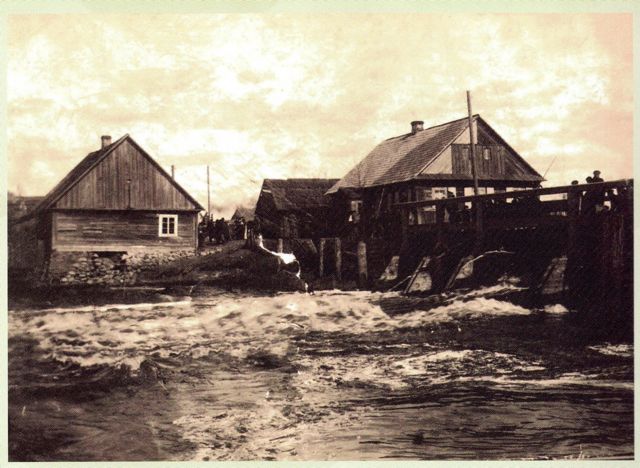
When soldiers of the town started a pogrom, the men in the family would hide under the hay in the loft. The soldiers would stick pitchforks into the hay. Once, a pitchfork missed one of Moshe's sons by three inches. During one pogrom, the Shapiros dug a hole in the yard and buried their silverware and money.
Moshe emigrated to the United States with the intention of staying and sending for his wife to join him. He didn't like the United States and went back to Europe after six months.
One of the Shapiros' daughters, Fanny (my grandmother), emigrated in 1903, when she was 17 years old. She came by herself - for adventure and to escape anti-Semitism. She went to live in Hoboken, New Jersey, with her second cousins. When she first arrived, she worked sewing collars in a shirt factory.
Fanny met Samuel Ehrlich in her cousin's home. They married and she quit working, while Samuel bought a coffee shop, which consumed most of his time. They had four children: Harry, David, Alice (my mother) and Selma ...
In 1925 Fanny brought Alice, age 15, and Selma, age 9, to visit her parents and cousins in Narewka for three months.
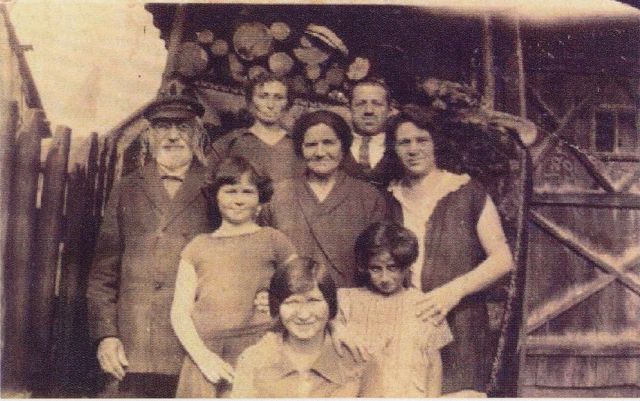
First row: Alice, 15
Second row, left to right: Selma, 9 and Shifre
Third row: Moshe and Bella Shapiro and daughter Fanny
Fourth row: Peshe and Hershel (Zvi) Shapiro
Seven of the Shapiro Siblings
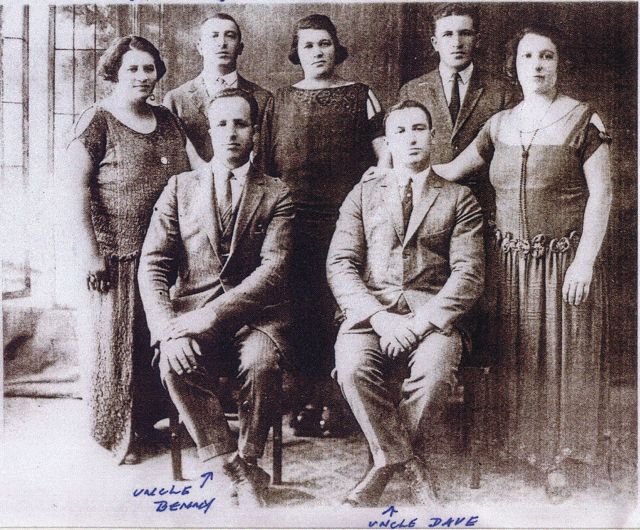
Photo courtesy of Elmer Shapiro
Seated: Benny and Dave
Standing, left to right: Rose, Sol, Fanny, Morris, Esther
SELMA'S MEMORIES
... My mother [Fanny] was the first one in her family to come to America from her hometown of Narewka, Poland, and gradually she brought all her brothers and sisters, except one [Herschel]. He had fallen off the roof as a young child, which somehow prevented him from traveling. He remained in Europe and died there. I don't know what happened to him, but the whole town was wiped out in World War II.
Each of the siblings lived for one year with my mother and father, until they got settled ...
My mother was ahead of her time in so many ways. She took me and Alice to Europe when I was nine and Alice was 15. She had come to this country when she was 17. She always wanted to go back. She and my father were always sending money back, but finally she said one day, "I've made up my mind, I'm going to Europe." Within two weeks, she'd packed up two or three trunks, and took one wardrobe trunk for us, and got our passports. We took a boat called the Reliance. She was a German ship that took nine and a half days. It was the beginning of the summer, so we were out of school. It was the most wonderful trip. I was drinking beer at nine years old! We went to Berlin, Paris, Warsaw...
After Berlin and Paris, we spent five days in Warsaw, and then went to Narewka.
As far as I remember, my grandmother Bella met us at the train in a horse and wagon. As soon as we got into the wagon, she took some camphor - it was on a string - and gave it to us to keep the spirits away. When he got into town, it was very small: one street with houses and buildings on either side, which were fairly new, that went through the middle of town. The street was cobblestone. The buildings were probably made of wood because that was what they would have had to use for building material from the nearby forest. There were no streetlights - it was like a nothing place, although there was a river.
We didn't stay with my grandmother. We stayed with some cousins who had a new house and lived across the street from my grandmother. It was a more contemporary house and had extra bedrooms. My grandmother's house was the only one that had not been destroyed in World War I. It still had a straw roof, and was more like a cabin. It was so small you had to put your head down to get inside. I was small, so it wasn't a problem. But it was just one big room. They had a barn in the back with chickens and a cow. Both my grandmother and grandfather were alive at this time. They had a little granary. They sold grain as feed to the Polish people who had pigs.
My grandmother Bella was a small woman. I remember that she wore a "sheitel," a wig that religious women wore. One time she took it off and I realized she hardly had a gray hair on her head. She wouldn't have been that old: My mother was only in her 40s when we went to visit. Moishe, my grandfather, had very blue, blue eyes, gray hair and a beard. Every morning he'd be outside and then he'd go to temple and pray. I never saw him do anything. Bella would work in the kitchen, cooking and cleaning up afterward, and sell the grain. They men didn't do much except pray.
Their other trade was lumber, because the Black Forest wasn't too far away. My mother always told the story about how she had been in the forest one day and the Czar of Russia was hunting and passed by her and her friends. He stopped and said, "What a beautiful little girl." She never forgot that.
They had no trade in Narewka, so there eventually was a big movement for the youth to go to Israel, to Jerusalem, to live. One of the cousins whom we met on our trip, a young woman, went to Jerusalem, of course, she went with a group. But she was unhappy and so she came back. When World War II started, she was killed. All the Jews in the town were killed ...
*****
ADDENDA
(by JK)
*Bella Shapiro's headstone is documented as being in the Narewka Jewish cemetery, but the inscription has badly faded and is difficult to read; therefore, the gravestone is difficult to locate. Jewish Bialystok and Surroundings in Eastern Poland: a Guide for Yesterday and Today (1998), by Tomasz Wisniewski, lists "Bejla, daughter of Szlomo Szapiro" with a death date of 1936, among the names discernible on the mazevas in the cemetery. The Database of the Jewish Cemeteries in Poland provides a photograph of her headstone and the following information, name: Beila Szapiro, name of father: Shlomo, date of death: 11 July 1936. The gravestone in that photograph is the same one that I photographed in August of 2010, just below.
Gravestone of Bella Shapiro, daughter of Shlomo
Died 11 July 1936
Photo courtesy: Joy Kestenbaum
In June of 2015 Barbara Kotin, the daughter of Sol and Esther Shapiro, visited Narewka and was able to find the gravestone of her grandmother Bella, for whom she was named.
Barbara at the gravestone of her grandmother Bella (2015)
Photo courtesy: Barbara KotinGravestone of Bella Shapiro (2015)
Photo courtesy: Barbara Kotin
*****
Fanny's sister Rose immigrated to New York from Narewka in 1914. While Fanny (Feigel) had left from the port of Antwerp in 1902, Rose left from Bremen 12 years later. Rose married another Narewka native, Samuel Shapiro; after the death of Samuel's father, his mother Rose had married a man from Narewka with the same surname. Like her sister Fanny, Rose also returned to Narewka to visit her family, accompanied by her children, Dorothy, Elmer and Norma. Rose's son Elmer Shapiro has a good memory of his two trips to Narewka, taken in 1928 and 1932. They stayed for several months on each occasion. He road a bicycle around the town and, he told me, spent time in a blacksmith shop, watching the men at work; this was probably the workshop of my Frydman great-uncles. (According to a ship manifest, Elmer and his mother and sisters left on the S.S. Paris from Le Havre on 30 September 1932 and returned to New York on 6 October 1932.)
Barbara Kotin has contributed photographs of her father Sol (Shlomo) Shapiro, who visited Narewka in 1932-1934. Below he is with friends and nieces, Dorothy and Shifre.
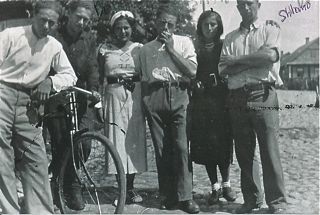
Photo courtesy of Barbara Kotin
In another photograph (below) he is with his brother Hershel (Zvi) and his mother Bella; this appears to have been taken the same time as one of the photos of her seen above.

Photo courtesy of Barbara Kotin
Hershel (Zvi), Bella and Shlomo Shapiro
Two additional photographs have been contributed, showing Bella at the grave of her husband Moshe Shapiro,
who died on 6 October 1932. In one her son Hershel (left) is standing on the other side
of the gravestone; in the other, Shlomo (right) is.
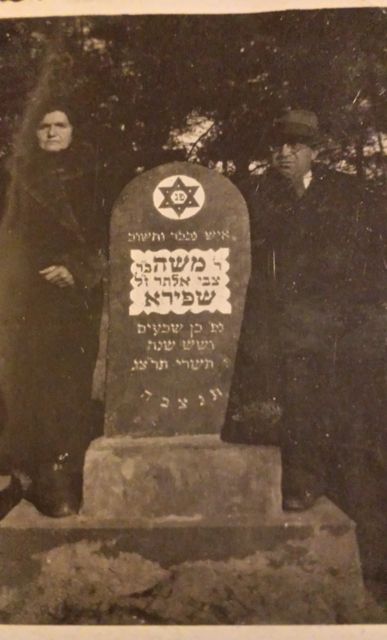 |
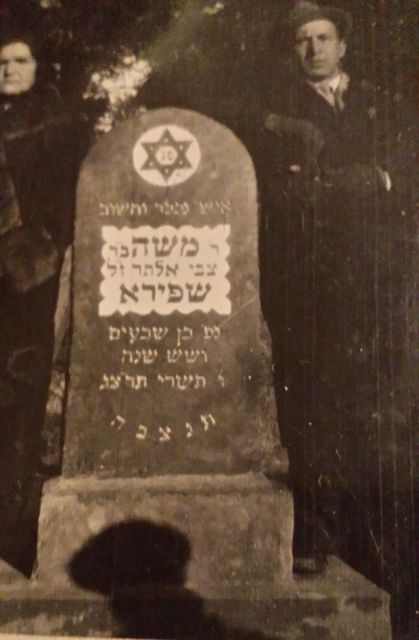 |
| Photo courtesy of Barbara Kotin | Photo courtesy of Barbara Kotin |
Inscription: Here lies
An honorable/respected and esteemed man
Moshe son of Tzvi Alter of blessed memory
Shapiro
Died at the age of 76 years
6 Tishrei 5693
Let his soul be bound up in the bonds of the living.
***
Solomon (Shlomo) Shapiro immigrated to New York in 1921, as Szloma Szapiro, departing from Gdansk (Danzig) with his brother Morris (Motel); accompanied by their sister Estera (Esther) and brother-in-law Abram (Abraham) Borkowski (Berman), together they traveled to the Brooklyn home of their sister and brother-in-law Samuel Ehrlich. Later, Sol became an American citizen. In 1933, while visiting in Narewka, he married Esther Wasilkowska, also from Narewka. Motel (Morris) Shapiro married Leah Kaplanska from Narewka.
Esther with her parents Freida and Nachman Wasilkowski, c1929.
Photo courtesy of Barbara Kotin
Together, Sol and Esther left for New York from Gydnia on 11 April 1934.
***
Barbara's Aunt Pua, her mother's sister, met her husband Zvi Shenderovski in Narewka; they immigrated to Palestine
in 1925. Born in Slonim, Zvi had arrived in Narewka with his family in 1907, when he was six. His father Bezalel served
as a cantor and shochet. The entire Shenderovski family went to Palestine before World War II. Pua and Esther were
the only members of the Wasilkowski family who survived the Shoah; their parents, Freida and Nachman, were among those
who were murdered. Barbara's paternal uncle Hershel Shapiro and his family also perished.
Barbara Kotin at Memorial to the Jewish Victims in Narewka (Zabłotczyzna) in 2015.
JewishGen Home Page | ShtetLinks Directory | Narewka Home Page | Family Pictures | Family & Personal Stories
Copyright © 2011 Joy Kestenbaum
September 2011; November 2013; June 2014; May 2015; August 2015; August 2016
